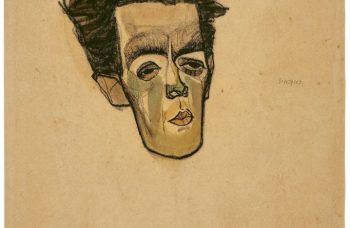Do visitors to the Hermitage Museum in St. Petersburg realize that “at least half the paintings hanging there are copies” and that the origianls have been discreetly sold to foreign collectors when the Soviet Union plunged into crisis? At least that’s what the famous art dealer Youri Vassilievitch Aleksee, ravaged by cancer and called “the Hunchback”, told journalist Andreï Constantinov in 1993.
Even if the figure of 50% is most likely an exaggeration, there is no doubt that fake and real paintings are indeed displayed side by side at the Hermitage Museum—just like in any other museum in the world. Guy Ribes, a forgerer and author of an autobiography as well as the subject of a 2015 documentary, attests that Degas forgeries which he signed himself are hanging in some museums in England. Chagall paintings displayed in French museums even bore his initials hidden in the details. More recently, the feisty Bill Pallot (a representative from Aaron Gallery, an expert in 18th century furniture, professor at La Sorbonne, member of the Order of Arts and Lettres and member of the Company of Experts in furnishing for the Court of Appeal in Paris) who, with the assistance of cabinetmaker Bruno Desnoues, managed to sell many fake pieces of furniture to the Palace of Versailles for millions of euros!
How could the curators of the Palace of Versailles allow themselve to have been deceived? Was the forgerer’s talent enough of an explanation? Or was it perhaps the effect of an uncontrollable psychological mechanism: the willingness to believe? A famous example is that of the celebrated Kourous (an archaic sculpture of 2 metres representing an ephebe) from the J. Paul Getty Museum. This sculpture had no history nor origin when it was submitted to the trustees for evaluation in 1983 by the curator of of Greek and Roman antiquities, Jiri Frel. It seemed to come opportunely out of nowhere, as if to answer the prayers of the Getty Museum to acquire an antique piece of importance. The well-known art historian Federico Zeri immediately declared that it was a fake. However countless meetings followed to discuss the purchase of the Kourous, whose price dropped with each meeting with the seller, (a Sicilian living in Basel who quickly dropped out of sight) going from 12 to 9 million dollars. It was finally purchased at that price in 1985. The J. Paul Getty Museum now owns what might possibly be one of the most expensive fakes in the world. We can enjoy all of the piece’s incoherences and stylistic anachronisms in Malibu where it still exists, the museum’s directors not having officially recognized the deception.
However visitors to major museums can be reassured: most of fakes are currently in the homes of private collectors. Less well-informed and lacking in expert support, these buyers are often more rushed and are less discerning when they make their purchases. The successions to come guarantee that many more will be disappointed.






